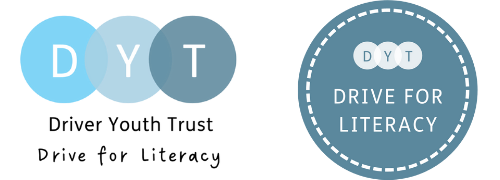Think Designable Conference
26/1/2017
- There are 13 million disabled people in Britain (one in five).
- One per cent of the creative industry would describe themselves as disabled.
- Two and a half per cent of people on screen are disabled.
Last November, I attended the Think Designable Conference. It was for people from the creative and design industries, with a theme of inclusion, so, as an educator, I felt privileged to be there.
As I reflected on the event, I kept coming back to ideas that, I believe, have something important to say.
Disability is a moving state
Disability can happen to anyone and will happen to everyone. It is not something that concerns a minority, but us all. By working as inclusive educators, we are not only changing the world for disabled students, but for our future selves.
We can be disabled by the environment that surrounds us. A person may be disabled in one place, but not in another.
In an educational context – are we enabling disabled students to say what helps, so that we can see what helps?
Design
When something is designed for the disabled person, it benefits everybody (look at those fabulous shopping trolleys that everyone uses). In the world of education, design can mean many things, from buildings (e.g. accessible toilets) to displays, through lesson planning and the teaching resources. For instance, the request for some innovative trainers came from a disabled person.
A key question to ask ourselves when we are designing (or planning) is whether we can see ourselves in the design; or are we designing for ‘the other’? Do we co-design? In an education context, do we involve the learner in our planning for them?
People use products differently – and unexpectedly. We have all seen this in schools when we watch children play. We need to ask, when we are using an intervention, or a published scheme, or even a statutory assessment, how is it being used? Is it being improved upon, or not? Is it achieving what it set out to?
We can look at the ‘outer edges of ability’ to help us be more inclusive in our design. As we look to new forms of statutory assessment in the primary years, we can ask, how can we ensure that no one is left behind?
Attitude change
There are laws to ensure inclusivity (there is even a section devoted to it in the National Curriculum), however, the law remains broken, and disabled people are still left asking ‘why aren’t you treating me properly?’
In education, parents are forced to use the law to ensure that their children get the education to which they are entitled. However, experience in school, both as a parent and a professional, shows the law is still interpreted, or filtered, through the beliefs of adults, teacher, or, commonly, TA.
Are we reflecting in education what we see commercially, that when disabled people are not catered for, they simply take their money elsewhere? Children and young people are not able to simply ‘click away’ from a school; it is worth asking ourselves in what other ways they are opting out.
Recourse to law will not necessarily reap the change towards inclusion that we want to see. We need attitude change rather than process change.
Making change happen
See: Understanding the educational and legal landscape
This is difficult for an already challenged profession. In the last six years we have seen unprecedented levels of change. Teachers and school leaders hearts are (generally) already fully engaged. They need time and space to think through the challenges that inclusive education brings to their settings.
Things to think about include:
- Who are the key decision makers?
- Who are the influential people behind the scenes?
- When you ask for opinions, whose opinion is sought? Do not assume that one disabled person/family of a child with SEND will know anything at all about the experience of anyone else.
- Are there any mixed messages?
- How do schools attract and retain people? Responsibility does not lie only with the disabled person. This applies to both children, young people and staff.
- ‘Society doesn’t always allow you to be your authentic self.’ (Simon Minty)
Why include?
‘Regular schools with an inclusive orientation are the most effective means of combating discriminatory attitudes, creating welcoming communities, building an inclusive society and achieving education for all.’ Salamanca Statement, 1994.
Find out more about the work of #ThinkDesignable
Also read: The Benefits of Working Together – lessons from the Salamanca Statement


